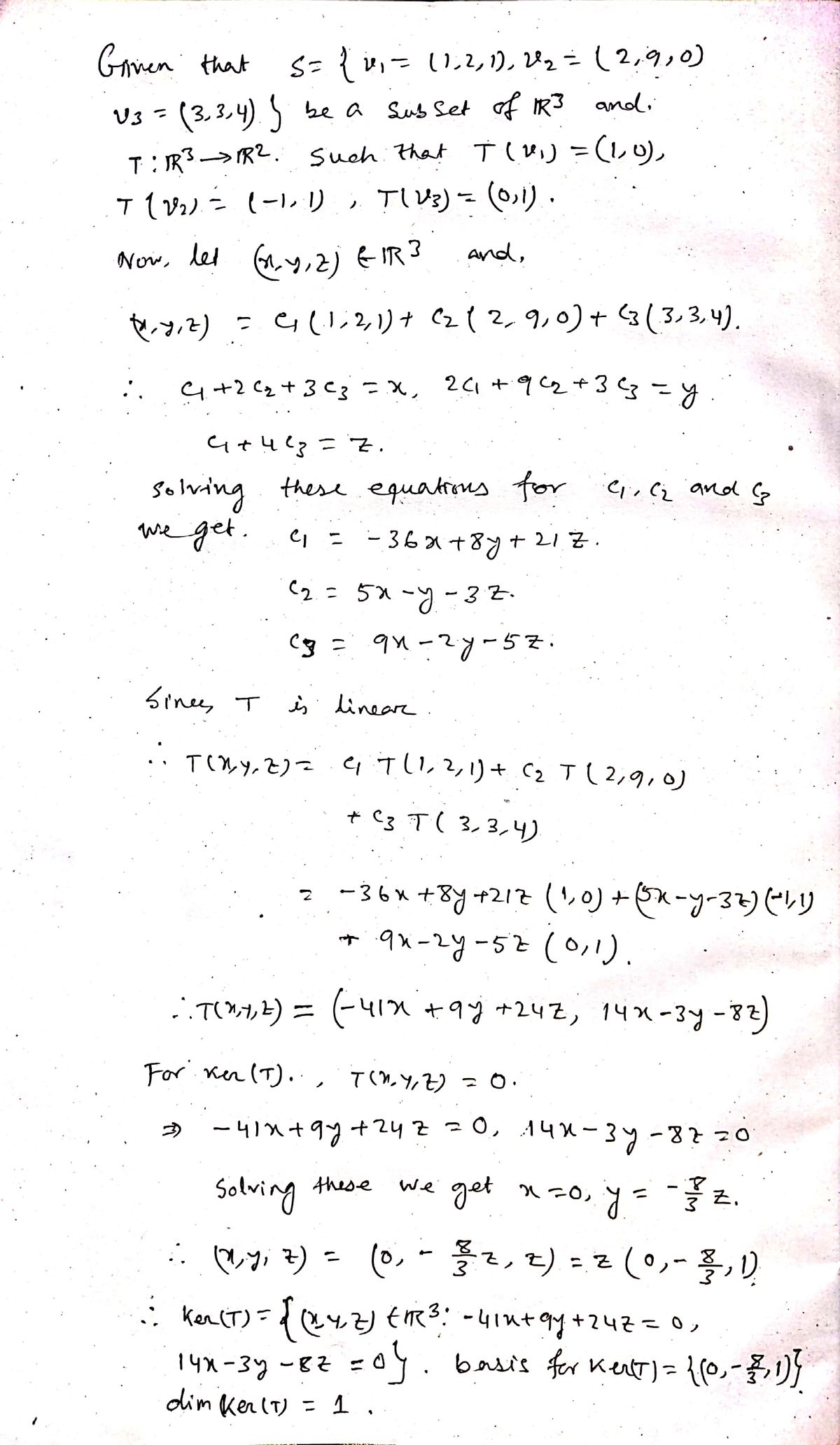Be S = {v1 = (1, 2, 1), v2 = (2,9, 0), v3 = (3, 3,4)} a subset of R and T: R → R? T(v1) = (1,0), T(v2) = (-1, 1), T(v3) = (0, 1). a)Find Ker(T) and a basis for Ker(T). What is the dim (Ket (T))? satisfies the theorem of b)dimension? T is iniecting? T Is it Subiective? Is T isomorphism? justify
Be S = {v1 = (1, 2, 1), v2 = (2,9, 0), v3 = (3, 3,4)} a subset of R and T: R → R? T(v1) = (1,0), T(v2) = (-1, 1), T(v3) = (0, 1). a)Find Ker(T) and a basis for Ker(T). What is the dim (Ket (T))? satisfies the theorem of b)dimension? T is iniecting? T Is it Subiective? Is T isomorphism? justify
Advanced Engineering Mathematics
10th Edition
ISBN:9780470458365
Author:Erwin Kreyszig
Publisher:Erwin Kreyszig
Chapter2: Second-order Linear Odes
Section: Chapter Questions
Problem 1RQ
Related questions
Question

Transcribed Image Text:Be S = {v1 = (1, 2, 1), v2 = (2,9, 0), v3 = (3, 3,4)} a subset of R and T:
R → R?
T(v1) = (1,0), T(v2) = (-1, 1), T(v3) = (0, 1).
a)Find Ker(T) and a basis for Ker(T). What is the dim (Ket (T))? satisfies the theorem of
b)dimension? T is iniecting? T Is it Subiective? Is T isomorphism? justify
Expert Solution
Step 1

Step by step
Solved in 2 steps with 2 images

Recommended textbooks for you

Advanced Engineering Mathematics
Advanced Math
ISBN:
9780470458365
Author:
Erwin Kreyszig
Publisher:
Wiley, John & Sons, Incorporated

Numerical Methods for Engineers
Advanced Math
ISBN:
9780073397924
Author:
Steven C. Chapra Dr., Raymond P. Canale
Publisher:
McGraw-Hill Education

Introductory Mathematics for Engineering Applicat…
Advanced Math
ISBN:
9781118141809
Author:
Nathan Klingbeil
Publisher:
WILEY

Advanced Engineering Mathematics
Advanced Math
ISBN:
9780470458365
Author:
Erwin Kreyszig
Publisher:
Wiley, John & Sons, Incorporated

Numerical Methods for Engineers
Advanced Math
ISBN:
9780073397924
Author:
Steven C. Chapra Dr., Raymond P. Canale
Publisher:
McGraw-Hill Education

Introductory Mathematics for Engineering Applicat…
Advanced Math
ISBN:
9781118141809
Author:
Nathan Klingbeil
Publisher:
WILEY

Mathematics For Machine Technology
Advanced Math
ISBN:
9781337798310
Author:
Peterson, John.
Publisher:
Cengage Learning,

